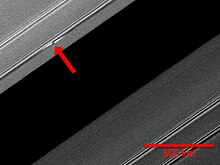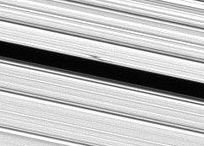|
Luna menor    Una luna pequeña, luna menor, satélite natural menor, o satélite menor es un satélite natural particularmente pequeño que orbita un planeta, un planeta enano u otro planeta menor. Hasta 1995, las lunas pequeñas o menores eran solo componentes hipotéticos de la estructura del anillo F de Saturno, cuando la Tierra pasaba por el plano del anillo de Saturno. Tanto el Telescopio Espacial Hubble como el Observatorio Europeo del Sur capturaron objetos en órbita cerca o muy cerca del anillo-F. En 2004, cuando Cassini atrapó un objeto de 4-5 km de diámetro en el anillo exterior del anillo F y luego, 5 horas más tarde, en el anillo F interior, lo que muestra que el objeto había orbitado..[1] Tres tipos diferentes de lunas pequeñas se han llamado lunas menores:
Véase tambiénReferencias
Otras Lecturas |
